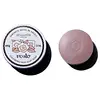What's inside
What's inside
 Key Ingredients
Key Ingredients

 Benefits
Benefits

 Concerns
Concerns

 Ingredients Side-by-side
Ingredients Side-by-side

Water
Skin ConditioningGlycerin
HumectantDimethicone
EmollientIsocetyl Stearate
EmollientNiacinamide
SmoothingIsopropyl Lauroyl Sarcosinate
Skin ConditioningSilica
AbrasiveAmmonium Polyacryloyldimethyl Taurate
Emulsion StabilisingOryza Sativa Starch
AbsorbentPunica Granatum Pericarp Extract
Skin ConditioningPotassium Cetyl Phosphate
EmulsifyingSorbitan Oleate
EmulsifyingZinc PCA
HumectantGlyceryl Stearate Se
EmulsifyingIsohexadecane
EmollientSodium Hydroxide
BufferingMyristyl Myristate
Emollient2-Oleamido-1,3-Octadecanediol
Skin ConditioningMannose
HumectantPoloxamer 338
EmulsifyingPropanediol
SolventHydroxyethoxyphenyl Butanone
PreservativeCapryloyl Salicylic Acid
ExfoliatingCaprylyl Glycol
EmollientVitreoscilla Ferment
Skin ConditioningCitric Acid
BufferingTrisodium Ethylenediamine Disuccinate
Maltodextrin
AbsorbentXanthan Gum
EmulsifyingPentylene Glycol
Skin ConditioningPolysorbate 80
EmulsifyingAcrylamide/Sodium Acryloyldimethyltaurate Copolymer
Emulsion StabilisingSalicylic Acid
MaskingPiroctone Olamine
PreservativeParfum
MaskingWater, Glycerin, Dimethicone, Isocetyl Stearate, Niacinamide, Isopropyl Lauroyl Sarcosinate, Silica, Ammonium Polyacryloyldimethyl Taurate, Oryza Sativa Starch, Punica Granatum Pericarp Extract, Potassium Cetyl Phosphate, Sorbitan Oleate, Zinc PCA, Glyceryl Stearate Se, Isohexadecane, Sodium Hydroxide, Myristyl Myristate, 2-Oleamido-1,3-Octadecanediol, Mannose, Poloxamer 338, Propanediol, Hydroxyethoxyphenyl Butanone, Capryloyl Salicylic Acid, Caprylyl Glycol, Vitreoscilla Ferment, Citric Acid, Trisodium Ethylenediamine Disuccinate, Maltodextrin, Xanthan Gum, Pentylene Glycol, Polysorbate 80, Acrylamide/Sodium Acryloyldimethyltaurate Copolymer, Salicylic Acid, Piroctone Olamine, Parfum
Sodium Palmate
CleansingSodium Palm Kernelate
CleansingWater
Skin ConditioningKaolin
AbrasiveGlycerin
HumectantHelianthus Annuus Seed Oil
EmollientMontmorillonite
AbsorbentIllite
AbrasiveAloe Barbadensis Leaf Juice
Skin ConditioningRosa Damascena Flower Extract
MaskingCocos Nucifera Oil
MaskingIsodecyl Oleate
EmollientCocamidopropyl Betaine
CleansingTocopherol
AntioxidantTetrasodium EDTA
Tetrasodium Etidronate
Emulsion StabilisingSodium Chloride
MaskingSodium Benzoate
MaskingPotassium Sorbate
PreservativeSodium Hydroxide
BufferingParfum
MaskingAlpha-Isomethyl Ionone
PerfumingBenzyl Alcohol
PerfumingCitronellol
PerfumingGeraniol
PerfumingHydroxycitronellal
PerfumingLimonene
PerfumingLinalool
PerfumingCI 77491
Cosmetic ColorantSodium Palmate, Sodium Palm Kernelate, Water, Kaolin, Glycerin, Helianthus Annuus Seed Oil, Montmorillonite, Illite, Aloe Barbadensis Leaf Juice, Rosa Damascena Flower Extract, Cocos Nucifera Oil, Isodecyl Oleate, Cocamidopropyl Betaine, Tocopherol, Tetrasodium EDTA, Tetrasodium Etidronate, Sodium Chloride, Sodium Benzoate, Potassium Sorbate, Sodium Hydroxide, Parfum, Alpha-Isomethyl Ionone, Benzyl Alcohol, Citronellol, Geraniol, Hydroxycitronellal, Limonene, Linalool, CI 77491
 Reviews
Reviews

Ingredients Explained
These ingredients are found in both products.
Ingredients higher up in an ingredient list are typically present in a larger amount.
Glycerin is already naturally found in your skin. It helps moisturize and protect your skin.
A study from 2016 found glycerin to be more effective as a humectant than AHAs and hyaluronic acid.
As a humectant, it helps the skin stay hydrated by pulling moisture to your skin. The low molecular weight of glycerin allows it to pull moisture into the deeper layers of your skin.
Hydrated skin improves your skin barrier; Your skin barrier helps protect against irritants and bacteria.
Glycerin has also been found to have antimicrobial and antiviral properties. Due to these properties, glycerin is often used in wound and burn treatments.
In cosmetics, glycerin is usually derived from plants such as soybean or palm. However, it can also be sourced from animals, such as tallow or animal fat.
This ingredient is organic, colorless, odorless, and non-toxic.
Glycerin is the name for this ingredient in American English. British English uses Glycerol/Glycerine.
Learn more about GlycerinParfum is a catch-all term for an ingredient or more that is used to give a scent to products.
Also called "fragrance", this ingredient can be a blend of hundreds of chemicals or plant oils. This means every product with "fragrance" or "parfum" in the ingredients list is a different mixture.
For instance, Habanolide is a proprietary trade name for a specific aroma chemical. When used as a fragrance ingredient in cosmetics, most aroma chemicals fall under the broad labeling category of “FRAGRANCE” or “PARFUM” according to EU and US regulations.
The term 'parfum' or 'fragrance' is not regulated in many countries. In many cases, it is up to the brand to define this term.
For instance, many brands choose to label themselves as "fragrance-free" because they are not using synthetic fragrances. However, their products may still contain ingredients such as essential oils that are considered a fragrance by INCI standards.
One example is Calendula flower extract. Calendula is an essential oil that still imparts a scent or 'fragrance'.
Depending on the blend, the ingredients in the mixture can cause allergies and sensitivities on the skin. Some ingredients that are known EU allergens include linalool and citronellol.
Parfum can also be used to mask or cover an unpleasant scent.
The bottom line is: not all fragrances/parfum/ingredients are created equally. If you are worried about fragrances, we recommend taking a closer look at an ingredient. And of course, we always recommend speaking with a professional.
Learn more about ParfumSodium Hydroxide is also known as lye or caustic soda. It is used to adjust the pH of products; many ingredients require a specific pH to be effective.
In small amounts, sodium hydroxide is considered safe to use. However, large amounts may cause chemical burns due to its high alkaline.
Your skin has a natural pH and acid mantle. This acid mantle helps prevent harmful bacteria from breaking through. The acid mantle also helps keep your skin hydrated.
"Alkaline" refers to a high pH level. A low pH level would be considered acidic.
Learn more about Sodium HydroxideWater. It's the most common cosmetic ingredient of all. You'll usually see it at the top of ingredient lists, meaning that it makes up the largest part of the product.
So why is it so popular? Water most often acts as a solvent - this means that it helps dissolve other ingredients into the formulation.
You'll also recognize water as that liquid we all need to stay alive. If you see this, drink a glass of water. Stay hydrated!
Learn more about Water